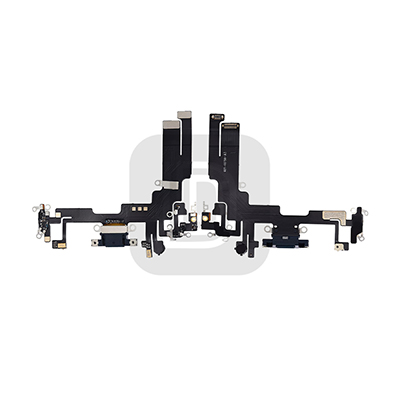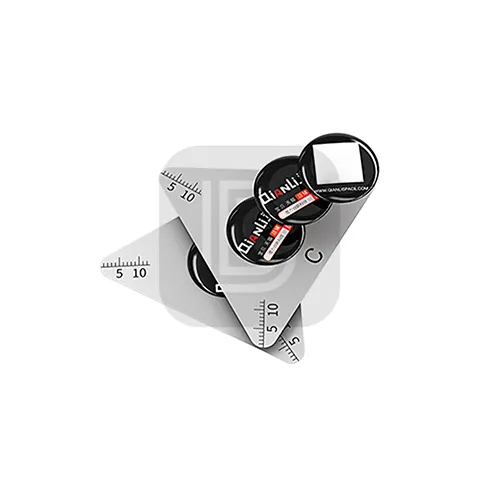An AI storm suddenly descended on the mobile phone industry.
“2024 is the first year of AI mobile phones.” On the first day of construction in the Year of the Dragon, OPPO founder and CEO Chen Mingyong issued an internal letter making this statement. Meizu also officially announced the discontinuation of its new traditional smartphone project, All in AI, almost at the same time.
Just three days apart, Huawei and Xiaomi held new product launch conferences one after another. However, the scene of “talking about AI mobile phones” expected by the outside world did not take place. After all, the focus of the former is “folding”, while the focus of the latter is “image”.
At the World Mobile Communications Conference (MWC), which opened recently, AI mobile phones have also become the focus of the exhibition. Many mobile phone manufacturers, including OPPO, Honor, Xiaomi, Samsung, etc., have demonstrated new mobile phones with AI functions, and plan to seize the opportunity before Apple, which is expected to release AI technology in June.
The craze for large models is raging so far. There will be ChatGPT at the beginning of 2023 and Sora at the beginning of 2024. From text to pictures to videos, AI has unlimited prospects. This has also brought a new power engine to the sluggish mobile phone market.
However, in the context of homogeneous scenes and high costs, it is still a long journey from “prospect” to “money prospect”.
As for the ideal “AI mobile phone” described by Meizu OPPO that is different from the “mobile phone + AI” model, is it coming? It seems that it can only be described with one joke – “Tathagata”.
Mobile phones + AI have been around for a long time, but it’s not enough
In fact, major mobile phone manufacturers have already started their layout in the AI field. During the big model explosion period in 2023, large models from major manufacturers are coming in droves: Xiaomi’s Mi model, vivo’s Blue Heart model, Huawei’s Pangu model, Honor’s Magic model…
OPPO mentioned at the AI strategy conference on February 20 this year that the company launched its first large AI model as early as 2020, carried out AI layout in advance, and continued to invest.
In 2023, OPPO will launch the self-trained Andes large model (AndesGPT), which ranks second only to GPT 4 in the SuperCLUE knowledge and encyclopedia ability rankings. OPPO also uses a three-level large model deployment strategy to jointly deploy the Titan ultra-large model, Turbo large model, and Tiny lightweight model on the device and cloud to meet efficient adaptation in multiple scenarios.
According to OPPO, during the Spring Festival of 2024, it has promoted more than 100 AI practical functions for more than 10 million users, and jointly moved towards the era of AI mobile phones.
It should be noted that behind OPPO’s above-mentioned actions are more than 10 million yuan in computing power expenses, and the cost can be imagined. The input-output ratio behind AI-based mobile phones is also an issue that major mobile phone manufacturers have to think about for a long time.
At present, the so-called AI mobile phones are more like “old wine in new bottles.” Each company has implemented large-scale AI models into mobile phones, which are limited to limited ranges such as voice and images.
Taking image applications as an example, Xiaomi’s latest 14 Ultra, released on February 22, has fully evolved in terms of imaging, giving people a full “camera feel”. The introduction of AI capabilities also fully serves imaging.
According to reports, Xiaomi Imaging Brain announced a comprehensive upgrade and became the “first AI large-model computational photography platform” named “Xiaomi AISP”. It claims to go deep into the hardware layer through Xiaomi ThePaper OS and fully integrate the computing power of CPU, GPU, NPU and ISP. , up to 60TOPS.
It is true that major mobile phone manufacturers seem to have tried their best to improve the user experience, but it still falls into the category of mobile phones + AI.
On the other hand, the current scenario of AI landing on mobile phones cannot be regarded as the rigid demand of users. The true arrival of “AI mobile phones” will take time, and in the short term, the incentive to change phones and the willingness to pay for features will be limited.
Meizu “burns the boat”, OPPO draws a development blueprint
Compared with the boom of large-model mobile phones that will start in the second half of 2023, Meizu’s response is a little late, but it has the courage to “break the cauldron and sink the boat”.
On February 18, Meizu announced that it would stop the development of new projects for traditional smartphones and would subsequently shift its focus to the exploration of new AI devices. Meizu said that their first AI hardware will be officially released within this year.
Meizu said that after two years of team building, resource allocation, product layout and sufficient pre-research on related technologies, Meizu now has the ability to fully transform into the AI field. As a comprehensively developed technology ecological company, Meizu has a complete R&D and supply chain hardware team, as well as a systematic development, design, and interactive software team, which will provide solid technical support and service guarantee for Meizu All in AI. .
Meizu has given a strategic plan on how to transform AI. According to reports, Meizu will reconstruct Flyme OS based on its AI strategic layout and create new AI terminal devices. It will be fully open to global large-scale model teams and actively embrace top international large-scale model teams such as OpenAI to build a new AI ecosystem. Meizu has clearly officially announced that its first AI Device hardware product will be officially released in 2024, competing head-on with the world’s top AI Device manufacturers.
Meizu has clearly officially announced that its first AI Device hardware product will be officially released in 2024, competing head-on with the world’s top AI Device manufacturers.
Compared with Meizu, which was “burning everything”, OPPO, which had already made relevant plans earlier, has gained momentum as an “action camp” after calling out “The First Year of AI Mobile Phones” and has given a more detailed plan.
At the AI strategy conference held on February 20, OPPO shared the four major capabilities and characteristics of the new generation of AI mobile phones: AI mobile phones must first be able to efficiently utilize computing resources to meet the computing needs of generative AI in the AI era; at the same time, AI Mobile phones must be able to keenly perceive the real world and understand complex information about users and the environment; AI mobile phones also need to have strong self-learning capabilities; in addition, AI mobile phones will also have more creative capabilities to provide users with continuous inspiration and knowledge support .
According to OPPO, its latest generation flagship AI phone Find X7 is equipped with the Dimensity 9300 flagship platform with excellent generative AI capabilities, ranking first in Android in AI computing power benchmarks. In addition, Find X7 is also the first AI phone to apply a 7 billion parameter large model on the device side, and performs well in text and visual processing response.
At the same time, OPPO also released the OPPO 1+N intelligent agent ecological strategy composed of OPPO AI super agent and AI Pro agent development platform.
Among them, “1” represents OPPO AI super intelligence, which can provide users with powerful knowledge capabilities based on a huge knowledge graph, document data and search engines, accurately understand user intentions, and give accurate results. “N” represents the new intelligent agent ecosystem empowered by the OPPO AI Pro intelligent agent development platform.
Can Apple and Samsung strike later?
If we turn our attention from domestic mobile phone manufacturers to overseas mobile phone manufacturers such as Apple and Samsung. It can be found that their reaction to the “AI mobile phone” cannot be called “cannot wait”.
During Apple’s November 2023 performance conference call, Cook said that Apple was working on AIGC. According to relevant reports, Apple has begun secretive internal layouts – including selecting three executives to be fully responsible for AI matters, allocating US$1 billion a year, and AI-powered Siri is also expected to be launched.
Samsung first demonstrated its self-developed generative artificial intelligence model Samsung Gauss at the 2023 Samsung Artificial Intelligence Forum.
Two months later, the Samsung Galaxy S24 series was officially released in California, USA on January 17 this year, and announced that it would cooperate with Google to embed the artificial intelligence large language model Gemini in the new phone.
According to reports, the Samsung Galaxy S24 series can realize real-time translation of calls and achieve barrier-free communication; use note assistants and transcription assistants to make work more organized; it is the first to create a “circle and search” function, opening a new chapter in search methods…
Eight days later, Samsung officially released its first AI phone, the Galaxy S24 series, to the Chinese market. The localization of Galaxy AI has become a major attraction. Samsung announced that it will work with many Chinese partners such as Baidu and Meitu to create mobile AI experiences.
Take the cooperation between Samsung and Baidu as an example. Focusing on the AI features and advantages of the Galaxy S24 series, the two parties conducted in-depth research on how to combine mobile phone scenarios with large models. Through long-term joint efforts, they have brought multiple AI applications based on Baidu Qianfan platform , allowing the advantageous experience of generative AI to reach more users through the Samsung Galaxy S24 series.
Compared with the “gearing” of domestic mobile phone manufacturers, whether Apple and Samsung, which are “half a beat behind”, can take advantage of the situation has also become a major focus of “2024, the first year of AI mobile phones”.
It should be noted that industry insiders also have different views on the concept of “the first year of AI mobile phones”.
According to the Global Times, many industry insiders believe that AI mobile phones are still in the start-up stage, with a lack of profit models, and domestic and foreign companies are still in the layout stage. The track is hot, but the development of the entire industry needs to further clarify the direction.
According to the prediction of international market research organization Counterpoint Research, 2024 will be the beginning of the global AI mobile phone era.
By the end of 2027, the shipment volume of smartphones with built-in AIGC functions is expected to exceed 500 million units.
IDC predicts that the shipment volume of new generation AI mobile phones in the Chinese market will be 37 million units in 2024, reaching 150 million units in 2027, and the new generation AI mobile phone market share will exceed 50%.

















